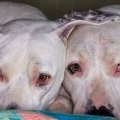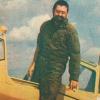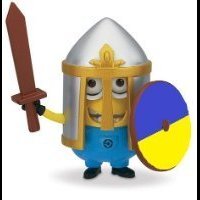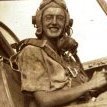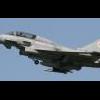Search the Community
Showing results for tags 'Meteor'.
-
It's a nice little kit this, fits together well - just remember to add plenty of noseweight! WK803 was one of the Meteors that took part in the 1953 Queen's Coronation flypast. This is how she appeared around this time, with the metal on the rear canopy, high speed silver paint and smaller diameter intakes. Meteor F8s flew with 56 Sqn from Waterbeach in Cambridgeshire until being replaced by Swifts in 1955. Here's the WIP:
- 17 replies
-
- 35
-

-
RAAF Gloster Meteor Mk.8 Detail Set (for Airfix) 1:48 Red Roo Models The Meteor F.8 was a later mark of the original aircraft developed as Britain’s first Jet Fighter during the war. The F.8 featured a stretched fuselage to overcome centre of gravity issues, and more powerful Derwent engines. It first flew in 1948 and by the 1950s had become the mainstay of RAF Fighter command despite the fact it was obvious by then that straight winged aircraft were obsolete compared to the swept wing fighters then coming on stream. In a strange twist some RAF Fighter Squadrons would transition from the North American Sabre back to the Meteor while waiting for Hawker Hunters to be delivered. The RAF retired its last target tug machines in the 1980s, with a couple surviving F.8s converted to drones with the MOD at Llanbedr being retired in the 1990s. Like many aircraft they were also delivered to commonwealth nations. The RAAF ordered 94. The RAAF would go on to use these aircraft in combat in the Korean War with No. 77 Squadron transitioning from P-51Ds onto Meteors. It was soon apparent that the straight winged Meteor was no match for the swept-wing MiG-15, although in 1953 Sergeant John Hale did score a MiG kill. The RAAF reverted to ground attack where it was found the Meteor was an excellent stable attack platform with its four 20mm cannon. The aircraft was also armed with British 60Lb rockets, and could also use US 5” HVAR rockets if needed. 77 Sqn flew over 4,800 combat missions in Korea with the loss of 30 aircraft mainly due to AA fire. One of the last RAAF units to operate the Meteor, 78 Sqn was probably the most well-known, flying the Aircraft as “The Meteorites” Aerobatic display team. The Meteor was replaced in RAAF service by the CAC Sabre, a locally modified re-design of the F-86. One of the main distinguishing features of the RAAF meteors was the addition of a spine ADF aerial fitting not carried by British airframes. The Set Red Roo are masters of improving kits that were used by their home country, and this set is intended to do just that to the new Airfix kit, which although a step up from what was previously available, still has a few faults and niggles that might annoy the detail-aficionado. We're reliably informed in the opening dialogue of the instructions that these issues are pretty easy to fix with the assistance of the contents of this set and a little modelling skill. The set arrives in a small flat box with the product details sticker pasted to the lid. Inside are two bags of parts, one containing resin, the other holding the metal parts. Another ziplok bag is full of three decal sheets of differing sizes that will further assist in the accuracy department. The instruction booklet doubles as packing material, and is quite verbose, offering many hints and tips to make your Meatbox as accurate as possible in a conversational style, accompanied by plenty of pictures of the real thing for reference. In the box you get the following: Resin Parts 8 x rocket bodies 8 x rocket tails 2 x main wheels 1 x nose wheel 1 x air compressor cowling 2 x nacelle vents Metal Parts 8 x brass rocket rails 1 x 23G hypodermic needle 4 x v-shaped 0.4mm brass wire 1 x 20mm 0.5mm brass wire 1 x 4mm 1mm brass tube Other Parts 1 x 7 x 14mm 0.4mm plastic strip 2 x stencil decal sheets for external tanks 1 x airframe stencil decals As you can see that's quite a list, and why the instructions extend to eight sheets of A4 that are printed on both sides. As well as providing you with a full and concise description of how to install all the parts, it also gives you lots of hints and tips on how to further improve your model interspersed with the instructions, which are of course optional, but as you're currently looking at an update set, you're probably enticed by this extra work already. Most of the "mandatory" updates (well, you did pay for them!) are simple changes that just require a little effort, but those freebies even extend to how to improve the fit of the wing roots, canopy etc., as well as repairing a few errors that Airfix made with a couple of boo-boos that arose due to them scanning a museum example, which is kind of understandable really. Markings The stencils are a replacement set for the kit decals, some of which are inaccurate, so just replace the whole lot with the new ones, the instructions for which are spread over four sides of the instructions, along with the various additional fuel tanks that the Meteor often carried. Conclusion This is a very comprehensive set that will be of use to builders of any Meatbox F.8, although not all the parts would be used. The stencils are a boon, and I find that they're an easy way to easily add to boost the perception of detail, especially if you hide the edges of the carrier film with a few layers of clear and some careful sanding. Highly recommended. Review sample courtesy of
-
I've been hammering along on my Tamiya Meteor build and took a few progress pics yesterday. My first attempt at scratch-building a seat belt/harness was awful. I recalled a tutorial on Philip Flory's website that showed his technique for simple belts and buckles but alas, it's now in the paid subscriber section, which I am not unfortunately. But I did find a YouTube video in which a gentleman uses the exact same method and that really refreshed my memory about the technique. Well, I still have a long way to go in getting them to look just like I want. They are too much out of scale. But, they are an improvement and they were cheap. Made from masking tape and fuse wire, I'm hoping they'll be passable under a closed canopy. I still need to do a bit of tweaking on the buckles and adjusters, trimming, shaping and squeezing a little more. The two lap belts: Shoulder harness: The seat is merely sitting in place in these pics. Once the lap belts are on, it will be glued into the cockpit tub and the shoulder straps glued to the seat back. The rear of the bulkhead will get a small cover plate to conceal the back of the shoulder harness. I cut a slot through said bulkhead and glued a tiny bit of fuse wire across it. My plan was the thread the shoulder belts over and through that wire, draping them down the seat front. That proved too ambitious; the wire broke away as I fiddled with the ends of the straps and finally they were pulled down and taped in place against the rear of the bulkhead. Speaking of "fiddly"; dicking around with those tiny wire buckles and strips of tape was damned fiddly even working beneath the magnifier light! I know they're "out of scale" but they are just about at the limit of my eyesight and hand dexterity. The landing gear is finished and ready. Gear doors are done as well: One wheel is separate from each tire and the other side requires careful painting. I used masks from a Maketar wheel masking set for the first time and they seemed to work well. I have used a circle template when the rim was raised enough from the tire and I've also used very thin paint to fill the edge between wheel and tire, running the paint around the wheel and then filling in with multiple coats, with thicker paint. But this time I tried something new and it actually worked. The wheels are painted Testor's flat steel (little 1/4 oz. square bottle) mixed with silver and the tires are Humbrol dark grey 32. It's the closest "out of the bottle" color for tires that I've found. Tamiya provides a ballast weight for the Meteor that neatly fits into a space on the fuselage belly. I've read that that was barely enough weight to prevent tail sitting so I looked for space for additional weight. I found it beneath the cockpit "cowling". I mixed lead shotgun pellets into two-part epoxy and spread that paste under the cowl part. In the pic, there's a gap between that cowl and the fuselage. Well, with just a tiny press, that cowl almost snaps in place flush as can be. An impressive bit of Tamya engineering: The fuselage, together and awaiting priming and final seam filling: I'm hoping I'll have time to finish the cockpit today and get it installed. Then, I'll be ready to assemble the wings and get them attached. At this point, there's still a lot of work left to do but progress has been made at last! Thanks for looking in, having a peek, and yes, comments are welcomed!
-
I finally sat down at the bench and got to work. 😀 The last scale modeling I did was in February 2017, completing a Hobbycraft Hurricane. Yesterday, I started in earnest on my Tamiya 1/48 Meteor Mk I. I'm building the No. 1 prototype, DG202/G, and got all the aluminum paint done, cockpit and seat, and have the wheels and tires and landing gear ready for paint too. I have to say that it felt good to begin work on a kit at last. I did find that my jar of Mr. Surfacer 1000 had dried up; had to use a bit of "White Out" for a seam filler. I'm going to Austin, Texas on Friday and will have a shopping list prepared for a trip to King's Hobby Shop, one of the area's finest and best-stocked. Hopefully, I can buy what I need and resist the siren song of more new kits. 😉
-
My next build is going to be this nice kit from MPM. I didn't photograph the decals and PE, will fix that. I won't be building the kit with the decals supplied in the kit I will be doing a 77 Sqn RAAF Meteor "Darky Jones" flown by Sgt Ted Jones, which sadly crashed, ran out of petrol on landing. I have Red Roo decals and some rockets and bombs to go with the kit. They will also be photographed and added to the WIP. Some pics of the parts in the box. Resin parts. Thanks for stopping by for a look. Stephen
-
The only combat use of RAF Vampire FB.5 and Meteor F.8 took place in 1951-55 during the Operation Firedog. Albeit the photos are known of the High Speed Silver No.60 Sq. Vampire FB.5s (WA237-WA276 range), the pictures of FB.9s (No.45 and No.60 Sq., WG, WL and WR serials) show them in camouflage - presumably DG/DSG over PRU. My question is whether are there any photos (or other documents) confirming existence of CAMOUFLAGED FB.5s over Malaya in 1950-56 period? Was this variant used only by No.60 Squadron? It is said that in April 1952 the ex-No.60 Sq. FB.5s were flown to Kai Tak to equip No.28 Sq. And these a/c (during their Hong Kong period) are sometimes shown as camouflaged. Were they repainted in HK or were they taken already camouflaged from Butterworth? The situation is even worse with Meteor F.8. It is said that only two aircraft were deployed with No.45 Squadron in 1955. No photos, no idea about the looks, even no serials are known to me. Does anybody know more details about these two specimen? Cheers Michael
- 22 replies
-
- 1
-

-
- Operation Firedog
- Vampire
-
(and 1 more)
Tagged with:
-
Hello all, do you also have short shot tail planes in your kit? This issue is not easy to discover, therefore may be this is the reason it slips through quality control. Even my replacement parts are short shot. I own two FR.9 kits and the issues are in both kits. I emailed Airfix with a summary of my findings, but they haven´t answered after four weeks and a reminder. The pictures are from my email to Airfix. Thomas
-
Meteor FR.9 Update set, Seatbelts & Masks 1:48 Eduard for Airfix Kit These are sets for the new Airfix kit. Interior Set (49920) This set has one brass fret & one nickel one. The coloured parts are primarily for the cockpit in the form of new instrument panels and side panels, There is also a new rudder pedals, and parts for inside the front wheel well. There are new parts for the ejector seat, but not belts in this set. For the airframe there are new cannon access ports, and framing for the nose camera ports Zoom Set (FE937) This is just the colour fret from the update set. Seatbelts (FE921) This set contains seatbelts, and ejection seat handles in the now familiar steel material. Masks (EX662) Supplied on yellow kabuki tape, these pre-cut masks supply you with a full set of masks for the glazing. In addition you get a set of hub/tyre masks for the wheels, allowing you to cut the demarcation perfectly with little effort. Review samples courtesy of
-
A second Meteor F8 finished in one of the markings options from the Airfix Club kit: A73004 Gloster Meteor F8 Queen's Coronation Review The Airfix issue of the MPM 1/72 kit. Also issued by Hannants under their Xtrakit name Painted with Xtracolor High Speed Silver Meteor F. 8 of 92 squadron, September 1952
-
I think I know the answer to this before I ask, but if you don't ask, you don't get. Has ANYBODY ever seen a picture of the single Meteor FR.5? I have a drawing from Edward Shacklady's book buy I have never seen a photograph. In case you weren't aware, the FR.5 was the intended fighter reconnaissance version of the F.4, similar to how the FR.9 was to the F.8. The prototype, VT347 was a converted F.4 but crashed on its first flight on 15th June 1949, very sadly killing its pilot Rodney Dryland. I cannot imagine it was never photographed but perhaps it would have taken place as part of what would have been the development programme had it not been cut short. So, has anybody seen a picture of the ill-fated VT347? Cheers, Neil
-
Gloster Meteor FR.Mk.9 (ED-48115, ED-72115) 1:48 & 1:72 Euro Decals by Fantasy Printshop Airfix are bringing us a 1:48 FR.9, and MPM have already done so in 1:72, so it's only fitting that we should get some aftermarket decals for the kits These sets from Euro Decals are printed by Fantasy Printshop, and arrive in A5 ziplok bags, with a set of side profiles on the front, instructions in the middle, and the decals on the rear, so they can be inspected through the protective sheet of thin paper. Sheet shown is 1/72, the 1/48 is the same layout just larger. Inside are four-way profiles of each of the six decal option, plus a legend with suggested colours in BS & FS numbers, Humbrol, Xtracolour, Xtracrylix, LifeColor and Modelmaster shades, with a page of general text about the aircraft on the back page. The options from the sheet are as follows: WG116 "G" of II (AC) Sqb, 2nd Tactical Air Force, RAF, Geilienkirchen, Germany 1955. WX978 "Z" of 8 Sqn RAF, RAF Sharjah, Trucial States, 1959. WX962 "Q" of 208 Sqn RAF, Middle East 1950. WL265 "L" of 79 Sqn RAF, RAF Larbruch Germany, 1955. WB125 "UUB" of 226 OCU, RAF, RAF Stradishall 1954. VZ611 "B Z" of RAF, Based UK 1950s WX573 " TG" of 79 Sqn RAF, RAF Gutersloth, Germany, 1953. VZ601 of 79 Sqn RAF, RAF Gutersloth, Germany, 1959. Registration, sharpness and colour density are all good, with a thin gloss carrier film cut close to the printed areas. There are a few issues with the profiles which have been spotted, along with some information; WB116/G - The 2 Squadron "Staffordshire Knot" logo on the intake was yellow in a red disk, not red in black disk (Airfix kit is correct) - the fin 'G' should have a white outline and have a tail - the G on the nosewheel (at least) is the wrong shape (Too rounded and should have a tail) - the front of the fin bullet should be red - the camo pattern on the stb side is slighly wrong WX973 T-G – camo on upper surface wrong (Grey goes too far forward), squadron marking is red/black; also code should be GoT on port side, should have black(or blue) and yellow fin bullet VZ611 BoZ – this is a 2 Squadron a/c, not UK based. Camo pattern shown is slightly wrong (compared to photo) on the demarcation on stb over nacelle VZ601 – Couldn’t find a pic of this one, but it should possibly have an individual letter on the fin (Pics of 79 Sqn Meteors with this marking are quite rare WL265 – Camo demarcation pattern on the real thing is slightly different, WX962 – couldn’t find a pic, but it matches other aircraft of that period. Worth noting that 208 had a huge variety of camouflage schemes, nose colours and nose patterns, so lots of alternative options WX978 – worth noting that this aircraft had very visible weathering around the gun access panel on the port side that almost looks like someone had sprayed ‘17’ on the side!!. Also beware a colour photo of another 8 Sqn FR9 that had the squadron colours painted in the wrong order (Yellow/Blue/Red) Even with a couple of errors the sheet recommended for your MPM/Special Hobby kit in 1/72, or the new Airfix kit in 1/48. My thanks to Dave Fleming for some help with this review. 1:48 1:72 Review sample courtesy of
-
Following earlier forays into vintage Meteor models (Matchbox NF.11 and Airfix Mk.III), plus an MPM PR.10, I decided to keep-up the momentum and go for Frog's 1970 model of the Mk.IV. It's by no means the first one I have done but to put it into context, Margaret Thatcher was just resting her handbag on the desk in No.10 when I did the last one. A trip up to the loft revealed my ace stash of old kits and buried deep in Box No.3, I found these bad boys: Christmas had come early. Pausing to build the Airfix Mk.III, (see link below), one Mk.IV was left in its rather fragile cellophane wrapping and the other was opened-up. https://www.britmodeller.com/forums/index.php?/topic/235040365-the-original-airfix-meteor-iii/ One thing that surprised me was the colour of the plastic. Usually medium grey, I was surprised to see that the model had been moulded in a very dark blue. Using my trusty Airfix MPM as the baseline, one can see that it is a crisply-moulded model with light, raised panel lines but none of the dockyard riveting seen on Airfix's Mk.III. So, the build commenced last Sunday evening. I had decided to add two sets of resin extra components to the build. Both I had used before and they would give me the opportunity to upgrade the cockpit and - importantly - the undercarriage bays. Therefore, the first check was to see if the Pavla cockpit would fit into the fuselage. Interestingly, I had the same problem as the Airfix Meteor: the resin nose undercarriage bay did not quite line-up with the model. I then lined-up the Mk.IV fuselage with the Mk.8 to check the nosewheel bays and saw that the Frog nosewheel bay was rather undersized and not best lined up. Therefore, surgery began: open-up the Frog nosewheel bay and enlarge it, the net result being a better fit for the cockpit area. So, we're off the blocks, more episodes to follow. Neil
-
Hello folks, I am building a Meteor PR10 in the early scheme of PRU Blue undersides and Sae Grey, Medium upper surfaces. Would anybody have an ides of the colour used inside the undercarriage bays and the undercarriage legs please? At present, I'm going for silver but wonder if they were PRU Blue? Kind regards, Neil
-
My entry will be the Airfix 1/72 Meteor III, this is the kit that started it all for me. My first kit, I built this is the mid 70's with some (a lot) of help from my Dad. It was memorable at it was painted with enamels and placed on the mantelpiece overnight to dry. Came down in the morning to find the heat from the fire had caused the wings to soften and droop, but I was hooked. So best part of 45 years later I am going to have another go. As per my first go, this will be built in flight. Missing a pilot so will need to find one from the spares box. Also decals are past it so have procured some replacements from a later Airfix boxing.
-
Morning folk's second build in the RAF GB was to mark it's entry into the jet age,Tamiya's kit has been around a while but still is a cracking build and a fare size to I can imagine those pilot's progressing from single engine fighter's getting a bit of a shock,anyway here she is and thank's for looking in.
-
No. 264 squadron flew Meteor night fighters from 1951 when it replaced its ageing Mosquitos with NF.11s, subsequently upgrading to the NF.14 in October 1954. The squadron flew these from Linton-on-Ouse until renumbering as 33 squadron on 30th September 1957 and moving further north to Leeming. The NF.14 had the most powerful engines of all the Meteor night fighters and continued in service until 1961. However, by the mid-50s it was fast becoming obsolete and regularly out-performed by Canberras during exercises. Despite this it was generally popular with its crews and just over 100 were built. WS810 was delivered to the RAF in March 1953, and became one of the last operational Meteor NF.14s after transferring to 60 sqn following 264's disbandment.
- 11 replies
-
- 25
-

-
Hi all Here is my recently completed Special Hobby 1/72 Meteor T.7.5 I usually model in 48th but having modellers block I decided to do something a bit different and was attracted to this colour scheme, there is something about a military aircraft in civi clothing that I like took my around 5 days to complete and I'm reasonably happy with it so thought id share it with you all. Meteor T 7.5 by Scott Clayton, on Flickr Meteor T 7.5 by Scott Clayton, on Flickr Meteor T 7.5 by Scott Clayton, on Flickr Meteor T 7.5 by Scott Clayton, on Flickr Meteor T 7.5 by Scott Clayton, on Flickr Meteor T 7.5 by Scott Clayton, on Flickr Meteor T 7.5 by Scott Clayton, on Flickr Be Gentle ScottC
- 21 replies
-
- 49
-

-
- special hobby
- 1/72
-
(and 1 more)
Tagged with:
-
It's back to the 50s again and another old bargain, the Matchbox Meteor night fighter. I'll be making this one out of the box, as WS810 of 264 Sqn, an NF.14, the version which I've always considered the nicest looking of all Meteor variants (along with the F.8). The decals look quite good for an old kit, and there's no flash on any of the parts or sprues. I've made notes to use the same nose as the NF.12 (ie. not the extra long one erroneously purported to be for the NF.14) and the wider engine intakes. I'll be painting the Meteor in its 50s colours of dark sea grey/dark green camo and medium sea grey lower, I believe for this aircraft with the high demarcation line.
-
Hi folk's one of the few RAF kit's in the small stash is the Meteor,I bought it for the prototype's GB but never started it so what better kit to mark the RAF's entry into the jet age,I will do the operational squadron scheme for this build,here's the box and content's. That's it for now see you April 1st.
-
Up at the Boscombe Down Aircraft Collection they are restoring a T7. As a Member I can look closely at what is going on and whilst talking to some of the engineering team had a look at the 2 seats. Ejector Seats? No. Something modern and sophisticated? No They are exactly the same seats as used in the late model Hawker Hurricane! Standing inside the canopy the frames are massive, the glass area is only about 60%. Given that blown clear canopies were common by the late 40s what were they thinking? For a trainer a good view out would be good. Anyway, I'll take photos as this restoration continues and if anyone has a specific request, just ask. The airframe will be finished as on of the T7s used at Boscombe Down and will sit as an outside exhibit, along with the Hunter and JP.
- 31 replies
-
- 7
-

-

-
The Meteor F.8 was the backbone of the RAF's fighter wings in the early 1950s, serving with over 30 squadrons. No. 245 squadron was based at Horsham St Faith (now Norwich airport), and flew Meteors alongside 74 sqn from 1950 until briefly re-equipping with Hunters in 1957. WL135 was delivered to the RAF on new year's eve 1953. She served as the squadron CO's aircraft, hence the specially marked tail fin. There is an example of a Meteor with these markings on display at the Norwich aviation museum. 50's style ...
- 17 replies
-
- 27
-

-
Another 50's classic! Hundreds of Meteors served with the RAF in the 1950s, and some beyond. I've got two of these Xtrakit F.8s in the stash, so fancied giving one a go after the big Vulcan (and limited space for a bit!) I'll do this one pretty much OOB, but with Xtradecals. I liked the markings for 501 sqn that came with the kit, but apparently they only ever had two Meteor F.8s, so I'd rather do one from a proper Meteor squadron. There are plenty to choose from, currently thinking it'll be WL135, the CO's machine with yellow fin, from 245 sqn at Horsham St Faith (now Norwich airport). But I might just do her in 74 sqn markings instead! Either way, she'll be green/grey camo with high speed silver undersides. Obligatory box shot. Somewhat battered but I only buy bargains on eBay. No £95 Valiants or £60 Buccaneers here unfortunately. Kit has just two main sprues plus transparency. Xtradecals not included, obviously! Bang seat painted, and some masking tape for the survival pack.
-
I'm thinking of doing one of these soon, but there are a couple of questions which hopefully someone can answer. Firstly, I'm going to be building VZ494 in the kit's 501 Sqn RAuxAF markings, as based at Filton in 1957. It appears this has the clear canopy as on later F.8s. However, the kit provides wider engine intakes as well as the narrower ones, would an F.8 from this date have the wider ones (the kit instructions say not, but just checking). Secondly, colour is shown as DSG/dark green over 'high speed silver'/aluminium. Would I be correct to use satin (allowing for scale and weathering), or should 50's Meteor F.8s be high gloss? Thanks!
-
I've always had a love for the Meteor. It goes back to 1972 when I bought my first modelling magazine: something I still have as you can see below. It was a fascinating and intimidating article in equal measure. I knew there was a Meteor III and Meteor IV, the marks I and II were a mystery and to discover that there were marks 7, 8, 11, 12, 14, even 20! Meanwhile, the article gave me a glimpse into past treasure with the original 1956 Frog Mk.8 model (regarded as unobtainable - see later) and then described how to build a vacform machine out of wood, aluminium and asbestos (yes, really) that you placed under the domestic grill. At age eleven, you might have well given me the plans to build a moon rocket... Nonetheless, I was hooked on Meteors! Roll forward to 1988 and I was well into modelling and absolutely delighted when Matchbox brought-out this beauty: Now, a little context is required here: in the 1980s, there were no Meteors in catalogues: Airfix's Mk.III was discontinued and Frog's Mk.IV was, well, Novo so in that pre-internet age you found them where you found them. So to get a model with THREE, say it again, THREE variants was a Meteor fan's dream. It was an excellent choice because it was a kit-basher's dream too: combine it with the spares box or accessories and you could pretty-well model any post WW-II version. - PAUSE - 1988 to 2017: house move, climb the career ladder, raise two children (not on my own, naturally) and spend all your spare time involved with this: https://www.e-v-r.com/ - still my obsession - and so scale modelling disappeared from view. I still had all the kits tucked away but I'd lost my mojo. 2017 and the mojo came back. Slowly at first with lots of gentle dipping of toes into the water and a great deal of uncertainty as to what to begin-with. To cut a long story short, I decided to more-or-less pick-up where I left-off with the Matchbox Meteor. I decided to add a couple of extras to jazz-up the model and decided on a standard Mk.11. I had made a start on the model, having painted the rather bare interior black (which had dried glossy - no wonder I'd given-up) I chose to add the Airwaves etched cockpit walls and hack-around the Czech Master nosewheel bay to replace the flat plate moulded by Matchbox. This proved to be a challenge as the resin insert really didn't fit the different profile of a two-seater: So, off I went with superglue, Milliput a razor saw and a lot of nerves and - to all intents and purposes - bodged it together: Meanwhile, I attached the quite beautiful etched instrument panels: I then came to glue it all together. It was a struggle: the etched sidewalls and the resin u/c bay required a great deal of hacking and gluing the whole assembly together took a lot of patience and tape: I then came to add the 'lid' for the Mk.11 and Mk.12 versions. As you can see, the application of filler was a given: the mouldings had slightly rounded edges and leaving them unfilled would have looked terrible: Similarly, the tailplane was provided in two versions and the fit was similarly 'challenging': Meanwhile, I assembled the wings, using the narrow (early) intakes (thank you Matchbox) and filled the HUGE gap in the rear wing fillet. Once the fuselage was glued (it stuck together nicely), it was greenstuff time: As an aside, the orange fillings above are ear defenders! Those small foam thingies that you roll-up and place in your ear does an excellent job of sealing orifices while filling, sanding and painting. So, with the wings on the model starts to look like a meteor: TO BE CONTINUED...



